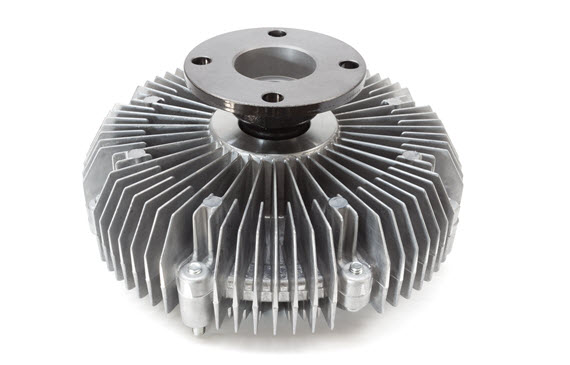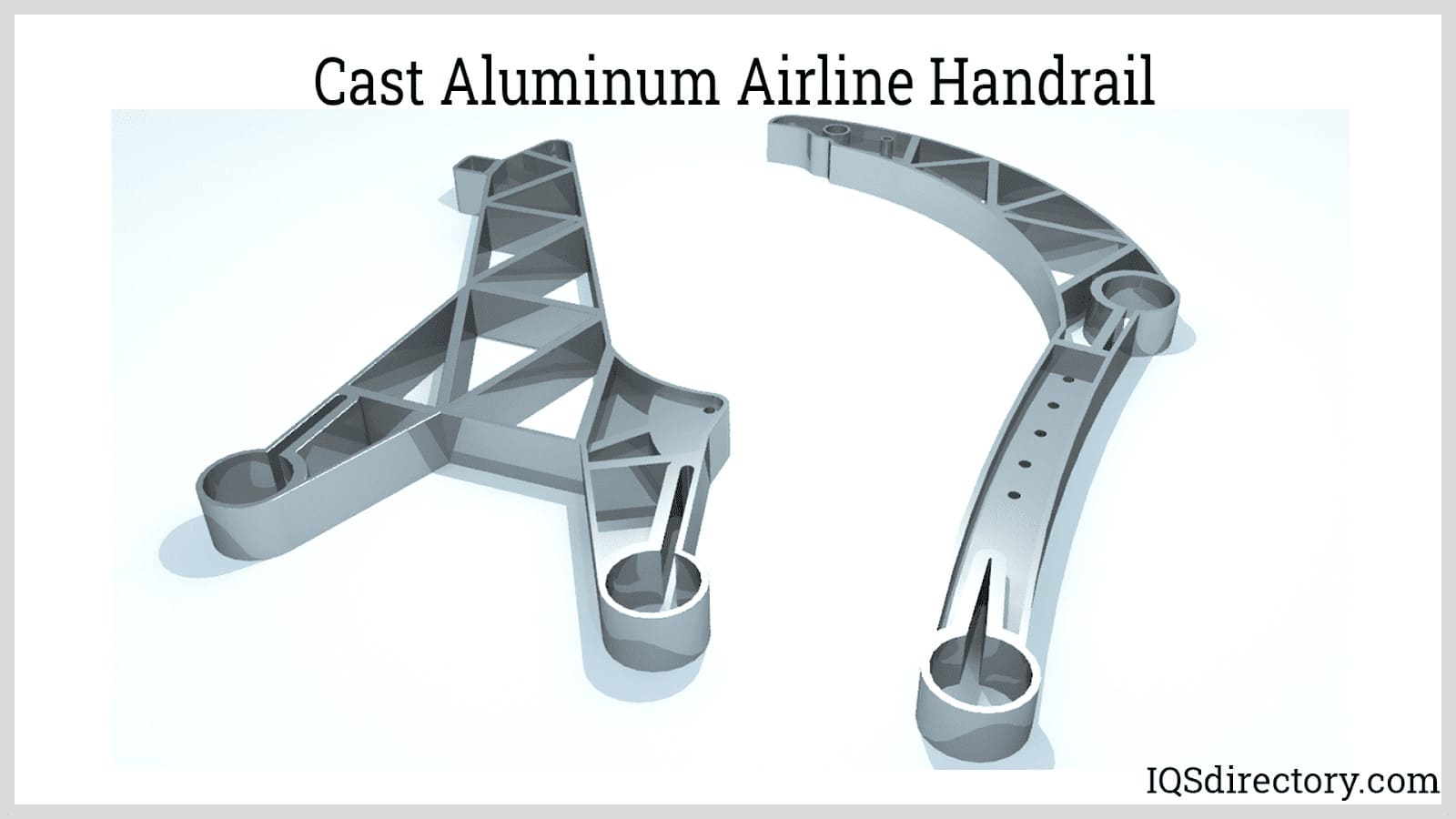How precision Metal Castings contribute to better engineering results
Uncovering the Benefits and Practical Use Aluminum Castings in Today's Market
Light weight aluminum spreadings have actually ended up being significantly appropriate in different industries as a result of their one-of-a-kind qualities. Their light-weight nature and resistance to rust make them suitable for requiring applications. In addition, the superior strength-to-weight ratio offers considerable benefits in layout and production. As industries remain to discover their capacity, the complete extent of aluminum castings' advantages and applications remains to be totally revealed. What lies ahead for this versatile material?
The Lightweight Advantage of Aluminum Castings
Numerous materials are made use of in production, light weight aluminum castings stand out mostly due to their light-weight residential or commercial properties. This characteristic makes aluminum spreadings an appealing selection for various sectors, particularly in aerospace and automotive applications, where weight reduction is necessary for boosting gas performance and efficiency. The light-weight nature of light weight aluminum enables producers to create elements that are easier to take care of and install, ultimately lowering labor costs.
The capacity to generate intricate forms without considerable weight charges enables designers to innovate while maintaining architectural integrity. Aluminum spreadings can successfully replace much heavier materials, causing significant financial savings in delivery and operational expenses. Their light-weight benefit also contributes to improved item long life, as lighter elements often lead to reduced deterioration on machinery. In general, the lightweight buildings of aluminum spreadings supply suppliers with an affordable side, fostering improvements in item layout and efficiency across various sectors.

Remarkable Rust Resistance
Aluminum castings have a natural resistance to oxidation, which considerably enhances their longevity in numerous atmospheres. This integral residential or commercial property not just adds to their toughness but additionally straightens with the lightweight advantage that light weight aluminum supplies. As an outcome, light weight aluminum castings are increasingly acknowledged for their remarkable deterioration resistance in countless applications.

Normally Immune to Oxidation
One of the standout qualities of light weight aluminum spreadings is their phenomenal deterioration resistance, which originates from a natural oxidation process. When revealed to air, light weight aluminum reacts to create a slim, protective layer of light weight aluminum oxide. This layer serves as a barrier against further oxidation and secures the underlying metal from destructive aspects such as moisture and salts. Unlike other metals, this oxide layer is self-repairing; if harmed, it swiftly reforms when subjected to air. This one-of-a-kind building improves the longevity of aluminum spreadings in numerous environments, making them perfect for applications in sectors such as aerospace, automotive, and marine. Subsequently, the all-natural resistance to oxidation substantially lowers maintenance expenses and enhances the integrity of aluminum castings sought after problems.
Light-weight Longevity Benefit
The lightweight nature of aluminum castings contributes substantially to their longevity, making them a helpful selection in different sectors. This remarkable longevity is mainly associated to aluminum's innate resistance to corrosion, which is boosted even more via anodizing and other surface area therapies. Unlike lots of metals, light weight aluminum does not corrosion; rather, it creates a protective oxide layer that guards it from environmental damages. This building is particularly advantageous in fields such as auto and aerospace, where weight reduction is critical without compromising strength. Furthermore, the longevity of aluminum spreadings minimizes maintenance prices and replacements, supplying financial advantages over time. Their lightweight longevity and deterioration resistance position light weight aluminum spreadings as a remarkable product for contemporary production applications.

Superior Strength-to-Weight Proportion
An amazing attribute of aluminum castings is their superior strength-to-weight proportion, which makes them very desirable in different applications. This inherent property enables aluminum spreadings to withstand significant stress and anxiety while staying lightweight, a vital consider markets such as aerospace, automobile, and production. Designers frequently prefer aluminum spreadings for parts that call for both sturdiness and lowered weight, enhancing gas performance and performance.
The high strength-to-weight ratio also helps with the style of detailed shapes and frameworks, making light weight aluminum castings flexible for facility applications. Additionally, the capacity to maintain architectural integrity under difficult problems warranties durability and integrity in products, from airplane structures to auto parts. This advantage adds to the expanding fad of making use of light weight aluminum spreadings in cutting-edge designs, eventually bring about boosted functionality and effectiveness across varied industries. As a result, the exceptional strength-to-weight ratio of aluminum castings positions them as a critical product in contemporary design and production.
Cost-Effectiveness in Manufacturing
Cost-effectiveness in light weight aluminum spreading production is primarily accomplished via reduced product waste and effective manufacturing procedures. By maximizing designs and utilizing innovative techniques, suppliers can decrease excess material usage while maintaining quality requirements. This strategy not only decreases production prices but additionally adds to a lot more lasting methods within the market.
Decreased Material Waste
Minimizing material waste in aluminum casting procedures considerably enhances production effectiveness. By optimizing the layout and manufacturing strategies, business can decrease excess scrap and enhance resource use. This decrease in waste not just lowers product costs however likewise adds to an extra lasting production design. The capacity to reuse light weight aluminum more supports cost-effectiveness, enabling makers to recover and reuse products without endangering top quality. As the market progressively concentrates on sustainability, decreased material waste lines up with environmental objectives while simultaneously enhancing productivity. Eventually, effective usage of resources reinforces the affordable placement of services in the marketplace, making light weight aluminum castings a desirable choice in different applications. The tactical approach to lessening waste shows a dedication to both environmental and financial obligation.
Efficient Production Processes
While traditional production procedures can incur substantial expenses, aluminum casting supplies a much more effective alternative that enhances overall manufacturing productivity. This method reduces material waste and permits for specific control over the production process, resulting in reduced labor and operational prices. The capability to produce complex forms with fewer steps even more simplifies production, adding to shorter preparations. In addition, aluminum's light-weight nature and outstanding thermal conductivity enable power cost savings during manufacturing and in the last application. By using contemporary spreading innovations, makers can accomplish higher throughput without giving up quality. Aluminum casting stands out as a cost-effective option, making it an appealing choice for services intending to optimize their production procedures in today's competitive market.
Convenience Across Industries
Aluminum castings demonstrate remarkable adaptability throughout numerous industries, as they can be tailored to fulfill certain requirements and applications. In the auto market, light weight aluminum castings are used in engine blocks, transmission real estates, and wheels, offering light-weight yet long lasting services that enhance gas effectiveness. The aerospace industry likewise takes advantage of light weight aluminum castings, using them in structural elements and engine parts due to their strength-to-weight ratio.
In the durable goods sector, manufacturers employ light weight aluminum spreadings for products ranging from pots and pans to furnishings, offering both visual appeal and functionality. The electronics industry utilizes light weight aluminum spreadings for housings and heat sinks, ensuring efficient thermal management. In addition, the construction industry leverages light weight aluminum castings for architectural components and architectural components, enhancing resilience and style flexibility. This wide applicability highlights light weight aluminum spreadings as a vital resource, satisfying the diverse demands of various markets while preserving high efficiency and integrity.
Sustainability and Environmental Effect
As sectors increasingly focus on lasting methods, light weight aluminum spreadings go become an eco-friendly choice due to their recyclability and reduced ecological impact. Light weight aluminum is just one of the most recycled products globally, with the capability to be repurposed multiple times without destruction of high quality. This characteristic significantly minimizes the need for raw materials and power intake related to main light weight aluminum production, which is energy-intensive.
In addition, light weight aluminum spreadings add to light-weight styles, bring about sustain effectiveness in transport applications such as auto and aerospace sectors. Their longevity and resistance to deterioration extend item life-spans, even more reducing waste and source usage in time. Moreover, many makers are embracing liable sourcing and eco pleasant manufacturing methods, boosting the sustainability of light weight aluminum casting procedures. Generally, aluminum castings represent a practical service for companies intending to decrease their environmental effect while attaining performance and performance.
Developments in Aluminum Spreading Technologies
Recent advancements in light weight aluminum casting innovations have actually substantially enhanced the efficiency and top quality of manufacturing processes. Technologies Full Report such as 3D printing and progressed mold-making methods have actually made it possible for manufacturers to develop elaborate styles with decreased material waste. This shift not just boosts the precision of cast components however likewise shortens lead times, permitting fast prototyping and faster market entrance.
The unification of sophisticated computer simulations help in forecasting prospective problems throughout spreading, leading to higher-quality results. The use of light-weight alloys has additionally contributed to the growth of more powerful, much more resilient products, dealing with markets varying from automobile to aerospace
Additionally, automated casting processes have actually arised, reducing human mistake and increasing production speed. Collectively, these technologies are transforming the light weight aluminum casting landscape, driving greater competition and sustainability in manufacturing. As sectors remain to evolve, these innovations will certainly play a necessary function in conference future demands for effectiveness and high quality.
Regularly Asked Concerns
Exactly How Do Aluminum Castings Contrast to Other Metals in Regards To Thermal Conductivity?
Light weight aluminum castings show remarkable thermal conductivity contrasted to several steels, such as steel and iron - Aluminum Foundry. Their light-weight nature and effective warm distribution make them excellent for applications needing reliable thermal monitoring in various markets
What Are the Usual Flaws Located in Light Weight Aluminum Castings?
Common flaws in aluminum spreadings consist of porosity, contraction, additions, and surface area abnormalities. These issues often emerge from improper air conditioning prices, poor mold and mildew layout, or contaminations, influencing the overall top quality and efficiency of the final product.
Can Aluminum Castings Be Recycled, and How?
Aluminum spreadings can be recycled successfully. The process entails collecting, melting, and changing the aluminum, which minimizes waste and preserves resources. This recycling adds to sustainability while keeping the material's properties for future use.
What Are the Common Lead Times for Light Weight Aluminum Casting Manufacturing?
Commonly, lead times for aluminum spreading manufacturing range from two to six weeks, depending on elements such as intricacy, tooling needs, and production quantity. Efficiency can improve with established vendor connections and maximized manufacturing procedures.
Just how Does the Surface Area Finish Affect Light Weight Aluminum Spreading Performance?
The surface coating significantly impacts aluminum casting performance by influencing corrosion resistance, visual high quality, and rubbing qualities. A smoother finish boosts longevity and performance, read more while a rougher texture can enhance attachment for subsequent coverings or therapies.
Lots of materials are utilized in manufacturing, light weight aluminum castings stand out primarily due to their light-weight properties. When revealed to air, aluminum reacts to form a slim, protective layer of light weight aluminum oxide. Cost-effectiveness in aluminum spreading manufacturing is primarily achieved via minimized product waste and efficient manufacturing processes. Minimizing product waste in aluminum spreading procedures greatly boosts production effectiveness. Ultimately, reliable use of raw materials enhances the affordable setting of organizations in the market, making aluminum castings a desirable option in various applications.